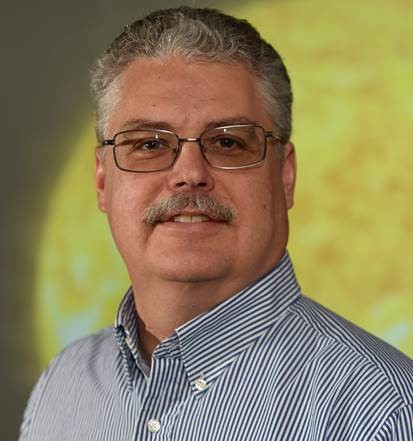The Kristian Birkeland Medal 2023

Charles Nickolos Arge
In 1997, Charles Nickolos Arge obtained his PhD at the University of Delaware/Bartol Research Institute on the topic of Astrophysical Magnetic Fields in Partially Ionized Gases. In 1996, he was hired at NOAA Space Environment Center (now Space Weather Prediction Center (SWPC)) to establish whether the discovery by Wang & Sheeley of the inverse correlation between solar wind speed and magnetic field expansion rate was useful as a forecasting tool, and if so, to move it toward a practical realtime operational model. During 1997–2003, Dr Arge further developed this model and implemented it in an operational environment. This expanded, improved model became known as the Wang, Sheeley and Arge (WSA) model.
WSA is now one of the most widely used models in solar and solar wind science for both basic research and applied purposes. It was the first space weather model to be made operational at the U.S. National Weather Service (NWS) and now is routinely used to make forecasts worldwide.
The impact and usefulness of the WSA model extends beyond operational purposes, as it is also actively used for basic research studies and mission support needs. For instance, Dr Arge used WSA to refute a controversial claim that the Sun’s polar magnetic fields had doubled in strength over the last century. He was also the first to demonstrate that inclusion of missing far-side active regions in the input maps used to drive coronal models can be vital for accurately predicting the corona and solar wind. Recently, WSA was used to provide a compelling resolution to the long-standing missing open magnetic flux problem (Arge et al., 2023). In recognition of his many contributions, Dr Arge was awarded the prestigious NASA Agency Exceptional Scientific Achievement Medal in 2022, and the 2023 Robert H. Goddard Science Team Award.
The WSA model is widely used by the community to study a broad range of solar and heliophysics topics such as the propagation and evolution of CMEs, the open magnetic flux problem, streamers and pseudo streamers, coronal holes, the origin and acceleration of the solar wind, and even the causes of aurorae on Venus.
Over the past three decades, Dr Arge turned the WS model from a promising preliminary research finding into the immensely useful tool WSA for both space weather operations and scientific research. WSA is now one of the most widely used models in solar and solar wind science. All of this was only possible thanks to Dr Arge’s hard work, vision, and creativity. For these reasons, Dr Arge is awarded the 2023 Kristian Birkeland Medal for Space Weather and Space Climate.
